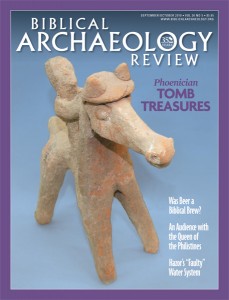Strata: Radiocarbon Dating Confirms Egyptian/Israelite Chronology
How do we know that Pharaoh Tutankhamun reigned from exactly 1333 to 1324 B.C. or that Ramesses II’s rule lasted precisely from 1279 to 1213 B.C.? Our current calendar was instituted by Julius Caesar in 45 B.C. and slightly modified by Pope Gregory XIII in 1582, so how do we apply meaningful dates to ancient Egyptian events that predate our own system by hundreds and thousands of years?
Until now, scholars used ancient Egyptian, Assyrian and Babylonian king lists—documents that meticulously record the succession of kings and the lengths of their reigns over hundreds of years. But these created only relative chronologies. These ancient sources weren’t fixed to a precise date, so although they might tell us that Ramesses II ruled for 66 years, between the reigns of Seti I and Merneptah, they didn’t tell us the actual years according to our modern dating system.a
To anchor these floating relative chronologies, scholars noted ancient references to astronomical events such as solar eclipses or the rising of certain stars (which were recorded as happening on the Xth day of the Xth month of the Xth year of so-and-so’s reign). Modern scientists were able to date these ancient astronomical occurrences, which allowed scholars to assign precise years to the ancient records. This system was the basis for scholars’ dating of events and archaeological remains throughout the Near Eastern and eastern Mediterranean world.
Already a library member? Log in here.
Institution user? Log in with your IP address.

